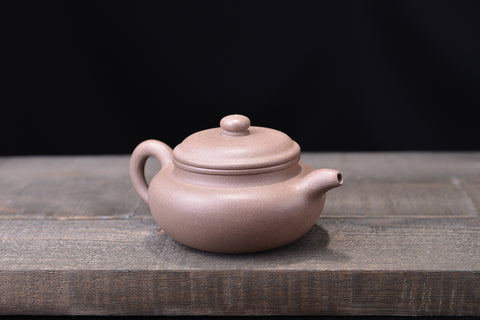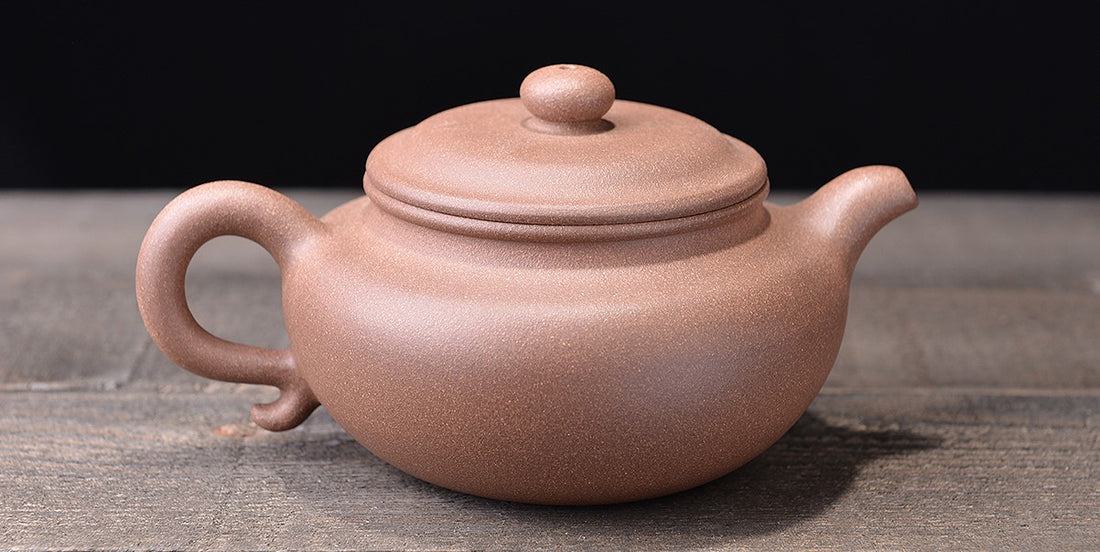
Shi Potian Talks about Zisha: Talking about the Decoration Technology of Zisha Teapot
Share
1 pottery carving
As the main technique of Zisha decoration, Zisha pottery carving decoration is commonly known as "lettering" or "carving". It is to carve decorative characters and patterns on pottery blanks with sharp knives. The origin of Zisha pottery carvings can be traced back to the Song Dynasty, but the pottery carvings at that time were actually just carvings of names and inscriptions on the bottom of pots with bamboo knives. In the Ming Dynasty, literati and scholar-bureaucrats were keen to integrate the artistic conception of poetry, calligraphy and painting into tea utensils, so as to express their imagination and feelings. During the Wanli period of the Ming Dynasty, Chen Zhongmei was originally a master of porcelain carving in Jingdezhen, Jiangxi. It was he who ingeniously integrated the art of porcelain carving and purple sand pot art when he went to Yixing to make teapots, bringing the art of purple sand pottery carving to a new stage. At the end of Ming Dynasty and the beginning of Qing Dynasty, the art of pottery carving flourished day by day. More literati, calligraphers, painters, and gold and stone masters participated in the creation of pottery painting and pottery carving of Zisha, pursuing the cultural art brought about by the combination of calligraphy and painting art, purple sand pot art and pottery carving art. Elegant and interesting. The most successful one was Chen Mansheng, a famous calligrapher and painter at that time, and an epigrapher. He and a group of literati around him or inscriptions, or created calligraphy and paintings were engraved on specially designed purple sand pots, which are called "Mansheng pots" or "mansheng pots" in the world. Mansheng Eighteen Styles". Afterwards, many famous calligraphers and painters such as Huang Shen, Wu Changshuo, Ren Bonian, Yu Youren, Cai Yuanpei, and modern Tang Yun, Yaming, Zhu Qizhan, Yaming, Fuhua, Feng Qiyong, Hua Junwu, Han Meilin, etc. , all of which involve sand pots and pottery carvings with affection. "Pots are as expensive as the characters are, and they are passed on to each other" is the charm of pottery carving art. The subject matter of pottery carving art is extremely wide. Landscapes, figures, flowers and birds, and ancient patterns can all be painted, and various calligraphy fonts such as regular script, cursive script, official script, seal script, bell tripod, and stone drum can be engraved on the body of the pot. The contents ( inscriptions ) of the pottery carvings usually use some auspicious words and prayer words to express people's wishes and blessings. There are some contents such as tea, painting, environment and emotion. Appreciating such a pot is a spiritual feast, and the spiritual enjoyment is beyond words. Some of the knife and engraving methods of pottery carving are derived from gold and stone carving techniques, but some are specially created for the special material of purple sand. In addition to studying knife carving techniques, pottery engraving craftsmen must also practice literature and painting endlessly, cultivate their minds, improve their literary and artistic accomplishments, and comprehend the true meaning of pottery carving art, so that pottery carving works can reach a state of perfection.

2 Mosaic
Zisha has a restrained, warm, simple and elegant texture, which is in line with the gentle and elegant characteristics of traditional Chinese culture, and is deeply loved by literati. However, during the development of Zisha, due to the influence of various factors, there have been attempts to fuse it with other precious materials including gold, silver, jade, diamonds, etc., which have achieved a perfect combination and complement each other. The inlaid decoration of purple sand has existed since ancient times. In the Qing Dynasty, there were still pot buttons, spouts, pot handles wrapped in tin and inlaid with jade, and the body of the pot was covered with a layer of tin skin. Zisha teapot. In the 1970s , Xu Xiutang, Xu Hantang, Bao Zhongmei, Lu Yaochen and others explored the gold and silver wire inlay technology, and created a batch of elegant, luxurious, innovative and appealing purple sand works. According to the requirements of the subject matter, some works are also inlaid with expensive diamonds, achieving the original intention of creating the finishing touch. Xu Daming also explored the ingenious application of mahogany and ivory to purple sand works, combining the natural beauty of ivory and mahogany with the creative artistic beauty of purple sand pot art, adding new ideas to purple sand decoration. More Zisha people are trying to use various materials to add to their creations, such as pearls, shells, glaze beads, porcelain beads, stainless steel, copper, etc., which greatly enrich the decorative effect of Zisha pots.

3 clay painting
Clay painting decoration, as the name suggests, is to use mud to draw landscapes, flowers and birds and other patterns on the mud that has been completed and still has a certain humidity. Mainly use the mud of natural color mud or white mud, black mud, cinnabar mud and other colored muds. The pile paintings of natural color mud should reach a certain thickness and have a shallow relief effect; Color block decoration effect with obvious color difference. Compared with pottery carving decoration, clay painting decoration has simple and bright patterns and rhythmic color changes. However, clay painting is easy to wear and white clay painting will fade, so it is not widely used in contemporary purple sand decoration. Clay painting decoration requires the creator to have good calligraphy, painting and other skills, as well as knowledge of mud and firing, in order to obtain the ideal decorative effect.
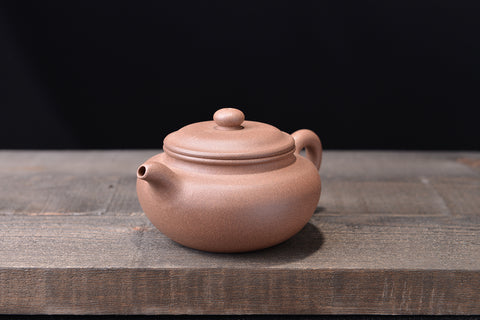
4 color glaze
Another decoration of purple sand is colored glaze, that is, to add colored glaze or cover it with colored glaze on the body of the pot that has been roughly fired, and then fire it a second time. The glaze method of Yixing Zisha teapot is similar to that of porcelain. In the Qianlong period of the Qing Dynasty, colored glaze decorations on purple sand pots were popular. Most of the handed down purple sand and glazed works were made during the Qianlong period, and the glaze decoration was the main one. But in the late Qianlong period, full glaze began to change to point glaze, and pastel decoration also appeared. Colored glaze decoration is to use low-temperature lead glaze pigments to pile up flowers, figures, landscapes, etc. on the finished purple sand, and then go through a second firing at a low temperature of 750 to 800 ℃. There is also a method of applying colored glaze to the purple sand body called "Lu Jun". Zisha colored glaze decoration has its fatal flaws. First, applying glaze on the dark texture of the purple sand ware does not show the rich luster of the glaze, but instead covers up the unique warm texture and color of the purple sand. The second is that the purple sand used as a practical utensil is glazed inside and outside, and it loses the function of the purple sand teapot, which has a good tea color and fragrance; A harmful material pollutes the inner wall of the teapot, making it lose its practical value.
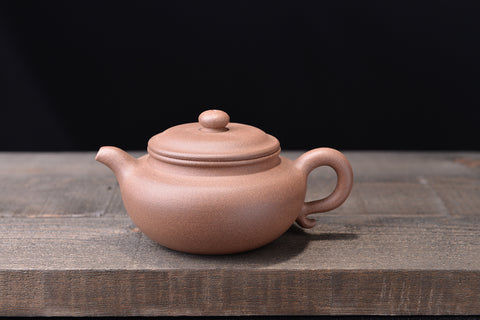
5 minced mud
The twisted clay decoration process of the purple sand pot is actually based on the twisted tire technique in the ceramic production of the Tang Dynasty. Zisha mud is a kind of five-color soil. It can be made into mud alone or mixed with different colors of mud. This kind of twisted mud is decorated like flowing water, like wood and stone textures, natural and vivid, and full of interest. According to Xu Xiutang's "Chinese Zisha", Li Changhong created "clay pot" and "clay pot" in 1958 . In 1977, Lu Yaochen created "Fang Yunzhong Pot" and "Clay Pot with Eight Directions Cloud Pattern". Li Changhong and Lu Yaochen were the first to use twisted mud as a decoration method for purple sand works. In particular, Lu Yaochen made great explorations in the twisted mud decoration process, and is known as the "Magician of Purple Sand". The twisted clay decoration of the purple clay teapot is neither pottery carving lines nor relief techniques, but a kind of invisible color and texture.
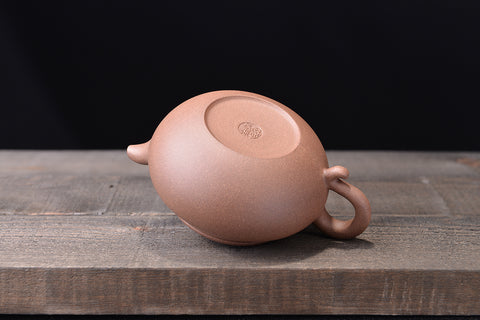
6 other
Seal recognition
Zisha inscription refers to the imprint of the maker, customizer, or supervisor engraved on the bottom, inside the cover, and under the handle ( and some on the inner wall of the pot ) of the purple sand ware with a seal or a knife. Inscription recognition was originally a mark to show the level of the maker and prevent counterfeiting, but now it has become an indispensable part of purple sand decoration.

mud fill
The so-called mud filling refers to the decorative method of filling the surface of purple sand ware with mud of different colors according to the creative intention. What is pursued is the change of color blocks formed by the texture and color of the purple sand mud. The color changes with the shape, and the shape is inseparable from the color".
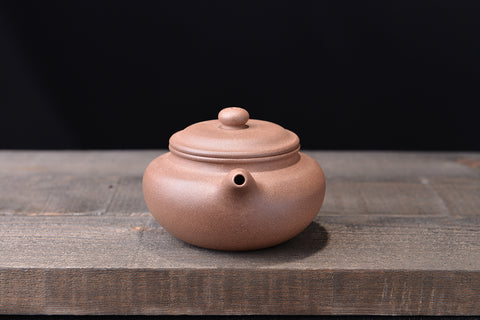
calendering
First, the purple sand blank is coated with the mud of the same color or different color as the pot body. The shape of the heap coating is determined according to the needs of modeling and creation, and then the surface layer is calendered and smoothed with tools. This decoration method not only makes the surface of the work have a visual roughness, but also achieves a tactile jade texture, forming a new texture of "light and hair" contrast on the surface of the sand pot.

Sanding
Sanding refers to adding a certain particle of sandy mud or sand to the fine mud, so that the work has a sandy texture in a smooth and moist texture, which reflects the creator's pot art requirements and aesthetic pursuit.
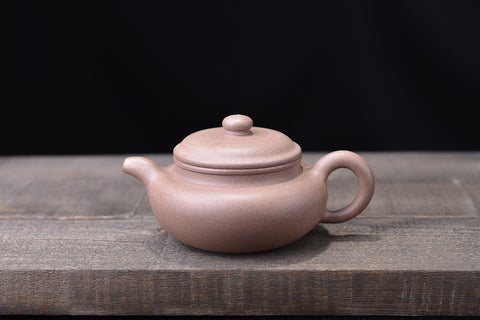
relief
This is a fun way to decorate. Sculpture some natural fruits, insects, squirrels and other creatures on the body, mouth handle and lid of the purple sand pot ( cup ) , as well as dragons and phoenixes, evil spirits and other mythical beasts, which enhance the appreciation and interest of the works and highlight the artistic effect.
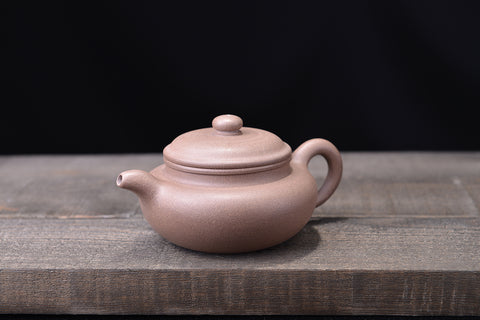
printing plate
Also known as embossed decoration, first engrave the designed patterns, characters, and patterns on the template, and then use the clay pieces to emboss the convex patterns on the template, and these clay pieces are inlaid and formed when making the blank. This technique can mass-produce works with the same decorative pattern, but its disadvantage is that it is difficult to process and calender the printed pattern, and the scope of creation is limited to a certain extent.
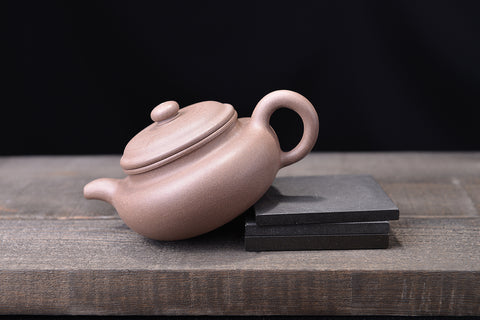
kiln change
The kiln change comes from the firing process of porcelain. When the purple sand is fired in the kiln, it will also produce "fire spots" due to different atmospheres, forming irregular and no similar color difference changes. Moreover, in practice, experienced craftsmen can also burn out many colors through different blending methods, which can be described as "various variations, ingenious". This kind of craft satisfies the aesthetic taste of pot lovers seeking novelty, difference, and change. It is a decorative craft that has only been pioneered and innovated in recent years.
